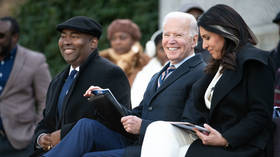New Evidence Supports Restoration of Jim Thorpe as the Sole Gold Medalist for His Victories in the 1912 Olympics

Jim Thorpe 1912 Summer Olympics. (Photo/Courtesy)
- BY LEVI RICKERT NATIVE NEWS
Jim Thorpe (Sac and Fox, Potawatomi) is an iconic figure in Olympic history. Those familiar with Thorpe will remember he won two Olympic gold medals in 1912 in Stockholm. What many may not know is Thorpe was stripped of the gold medals by the International Olympics Committee (IOC) one year later after it was discovered he had been compensated—payment amounted to the costs of his room and board—for playing minor league baseball prior to participating in the 1912 Olympics.
The IOC erased his records from the Olympic record books. To those concerned with Thorpe’s legacy and historical accuracy, his medals and records were stolen from him.
Attempts to have the medals returned were not rewarded until 1982, almost 30 years after Thorpe's death (1953), when replicas were delivered to his family. Even though the gold medals were reinstated, the IOC did not restore Thorpe’s records in Olympic history.
Many feel the IOC did not go far enough.
For the past couple years, Bright Path Strong has had a petition that seeks to have the have the gross injustice corrected. In order to correct the wrong, Bright Path Strong wants full restoration of Jim Thorpe as the sole gold medalist for his victories in the 1912 Olympics.
This week as the Beijing 2022 Olympic Winter Games are underway, Bright Path Strong is proud to present a case study to support the petition to reinstate Jim Thorpe as the sole recipient of the gold medals.
The case study was authored by Robert W. Wheeler and Dr. Florence Ridlon for The Doug Williams Center.
The report tells the story of Thorpe, an orphan at 17, trusting two unscrupulous men who clearing did not have Thorpe’s best interests at heart.
An excerpt from the case study says:
“The sad truth was that without a lawyer or some honest person to advise him, Jim lost his titles and medals because he had no one to tell him he did not have to give them up. According to Jim’s daughter, Grace, Warner entered Jim and Gus Welch’s room when they were not there and took his medals and trophies, packed them up and shipped them to the Swedish Olympic Committee (G. Thorpe, personal communication, 1974). Thorpe trusted the white man and his system of justice, and both failed him.”
“We are honored to have the opportunity The Doug Williams Center has given us to provide a distinguished forum through which we can discuss the underlying illegality and racism behind the decision to strip Jim Thorpe of his awards and honors,” said Wheeler and Ridlon.
For Nedra Darling (Prairie Band Potawatomi Nation), co-founder of Bright Path Strong and one of the producers of the Bright Path Strong, The Jim Thorpe film now under development, says it is important to correct the injustice against Thorpe.
“Correcting Jim Thorpe’s achievements in the official records would not end the systemic prejudices that pervade our institutions, but it would send a powerful message of hope and liberation to Indigenous communities in the United States and around the world, whose past and present should no longer be invisibilized,” Darling said in a press release.
“The startling injustices we observe throughout Jim Thorpe’s career are a small glimpse into the numerous wrongs against the Native American community that must be rectified,” explained Brandon A. Logan, Executive Director of The Doug Williams Center. “We are committed to telling his story and hopeful that this research will open the door for more solutions.”
Thorpe’s legacy continues with an active grassroots petition campaign, feature motion picture, and ongoing work with Ms. Anita DeFrantz, the first woman and first African American, to serve as a representative from the IOC to the United States. Mr. Logan added “Jim Thorpe deserves to be a household name, highly regarded in every place that American sports legends are mentioned.”
Abraham Taylor, Bright Path Strong co-founder and one of the forthcoming film’s producers, said: “Jim Thorpe’s unrivaled athletic achievements are well known throughout the world, but what truly defines his greatness is something not widely known—what he overcame to accomplish what he did. The team behind the film, which will tell this remarkable story, is proud to contribute to Mr. Wheeler’s and Dr. Ridlon’s near half-century effort to right this historic injustice.”








